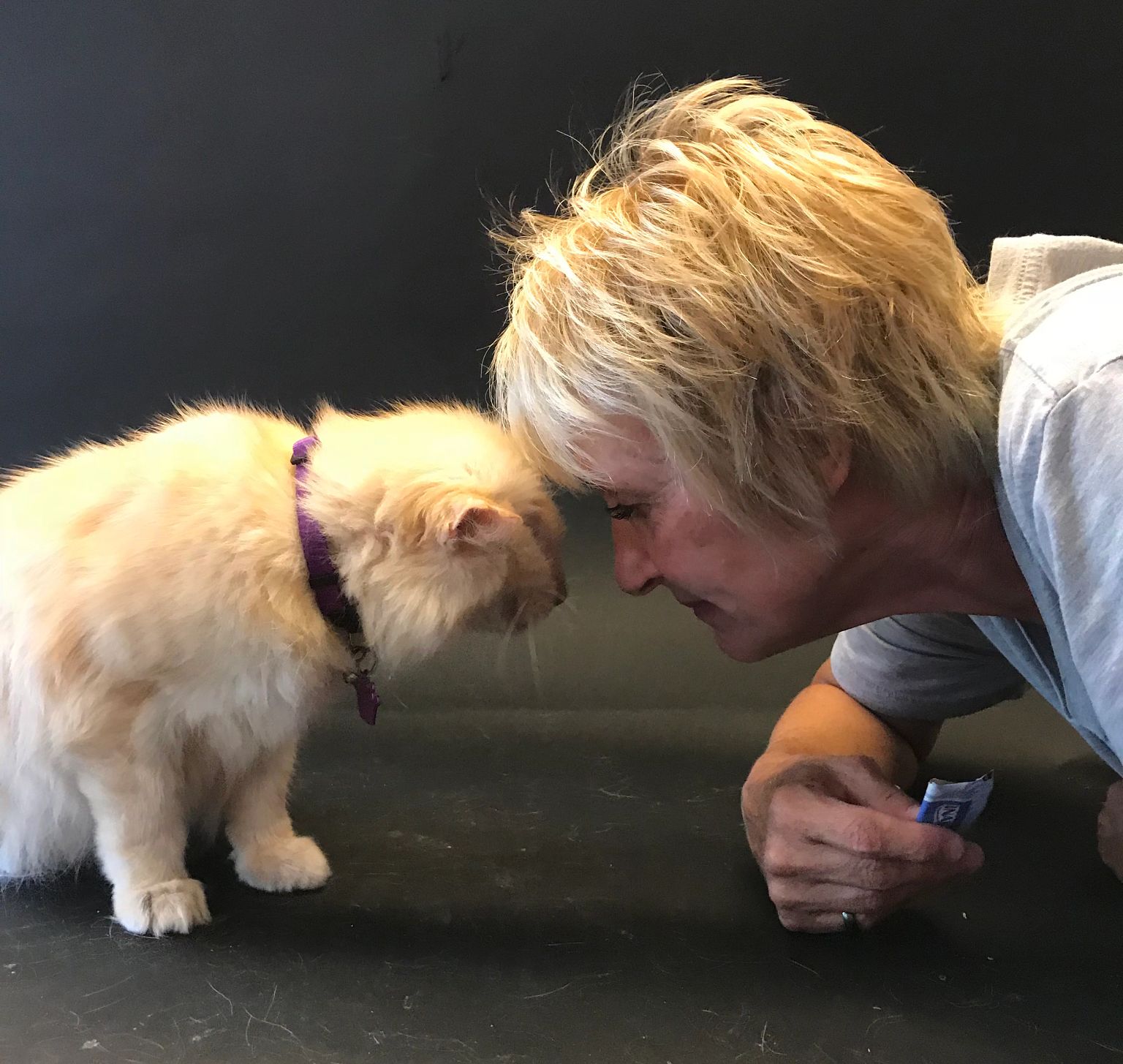AARP Hearing Center
Michele Hoffman found her purpose 20 years ago, all thanks to a blind cat.
Hoffman was living with her husband in North Hollywood, working for Apple streaming services by day and fostering cats for local rescue groups in her free time. And then on Valentine’s Day in 2004, she went to pick up a cat from an animal shelter and noticed a beautiful black cat in a cage near the back.
“She was blind, and they told me she was going to be euthanized that night,” says Hoffman, 60. “The poor cat was reaching through the bars at me and crying, and it just broke my heart.”
So Hoffman adopted the cat on the spot and named her Valentine. Saving cats was nothing new for Hoffman — the three-bedroom apartment she shared with Randy, her husband, was already brimming with strays — but something about Valentine got Hoffman thinking about all the special-needs cats who’d never find a home.


“These amazing cats who deserve a life were either being euthanized at vet's offices or at shelters, or they were thrown out on the street,” she says. “And it was always the seniors, the defects, the injured animals that weren’t deemed cute enough or youthful enough to be adopted.”
That same year, she founded the nonprofit Milo’s Sanctuary and Special Needs Cat Rescue — named for a friend’s cat. In the beginning, it was just her apartment. “We didn’t have cages,” Hoffman says. “We still don’t. All of our cats live as family members. We only cage for medical reasons or introductions or if they're eating a special diet. Otherwise, everyone roams free.”






































































You Might Also Like
Insider Secrets from a Top Veterinarian
15 tips on giving your pets the best care
Canine Companions Provide Vital Caregiving Assistance
Four-legged helpers can assist with daily tasks and even monitor medical conditions
AARP Smart Guide to Pet Adoption
33 tips for finding a new furry best friend after 50